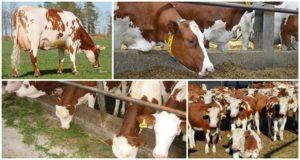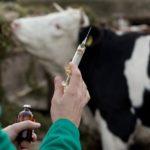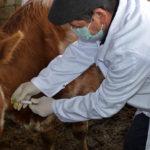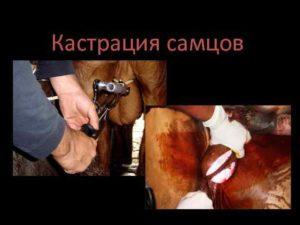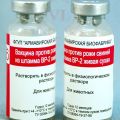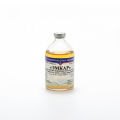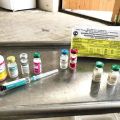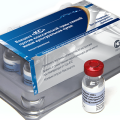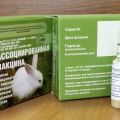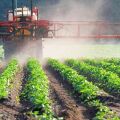Instructions for the use of anthrax vaccine in cattle and dosages
Anthrax is a serious infectious disease affecting cattle. Attempts to stop an insidious disease are often unsuccessful, since the pathogen is able to perfectly adapt to the environment, grows and spreads in the body of animals, soil, and water sources. Therefore, it is necessary to vaccinate cattle against anthrax to prevent disease.
What is a vaccine
Anthrax vaccine is a suspension of live spores. It is a cloudy white solution. The drug is stored in glass bottles, which are closed with rubber stoppers. The vaccine contains 30% glycerin, to which 55 strains have been added. These substances are pathogens that contribute to the development of immunity in cattle.
1 ml of vaccine contains approximately 20-25 million live viruses. The release form of the drug is vials, which contain 20, 50, 100, 200 ml of solution. The veterinarian will prescribe doses of the vaccine according to the type and weight of the animal.
An effective product that successfully fights anthrax is important to store as required. If stored improperly, the vaccine becomes unusable and is destroyed. When white flakes form in the liquid, the agent is destroyed in a boiling soda solution.
What is the expected result
Vaccination aimed at preventing the appearance of anthrax is not getting rid of a disease that causes carbuncles, edema, and severe intoxication of the whole body. The vaccine is designed to create immunity against the virus. If the animal is infected, the vaccination will not be beneficial.
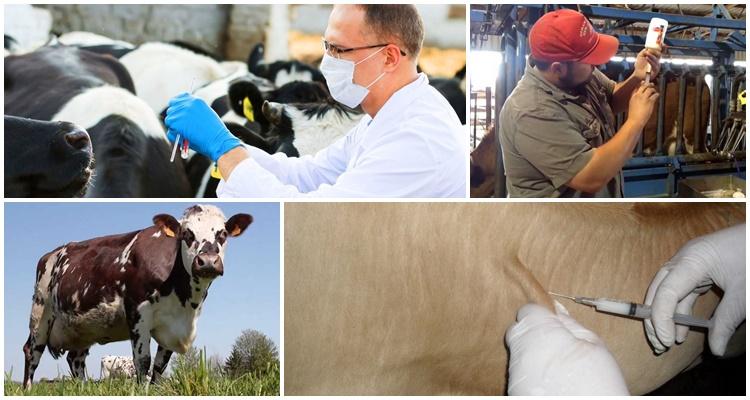
The effect appears within 10 days after the injection. Its duration in adult animals is approximately 1 year, it may be slightly longer or less. The term of effectiveness depends on the individuality of the individual's organism. The veterinarian can most accurately determine when examining the animal. In young animals, the vaccine is effective for about 3 months, then a second vaccination is given.
Terms, methods, doses
Only the veterinarian sets the exact dates for the vaccination of cattle. According to generally accepted standards, adult animals are vaccinated once a year. Vaccination of young animals is carried out according to the scheme.
| Graft | Term |
| The first | In 3 months |
| The second | In 6 months |
| Subsequent | Unified vaccination scheme for young and adult cattle. |
Animals are vaccinated in two ways:
- Intradermal. The solution is injected into the hairless area. Requires 2 cu.see means.
- Classic subcutaneous. Inserted into the middle of the neck. For a standard animal, 1 cubic meter is required. see vaccines.
Only the veterinarian determines the amount of vaccine and the injection site.
In what cases is cattle vaccinated
The veterinarian makes the order of cattle vaccinations. Livestock vaccination is also carried out under the strict supervision of a veterinarian. But every breeder of cattle must know that in order to prevent an infectious disease, it is worth following the existing generally accepted rules:
- all individuals should be vaccinated at the same time, except for animals with a weakened immune system or sick at the time of vaccination;
- when one animal is infected, the rest must be vaccinated, regardless of when the vaccination was carried out;
- when a new animal appears, it needs to be vaccinated - it can be admitted to other livestock 2 weeks after vaccination.
When vaccination is over, observation of the livestock is required for 14 days. Control is needed for changes in the animal's immunity. After vaccination, heavy loads, overheating or hypothermia are prohibited.
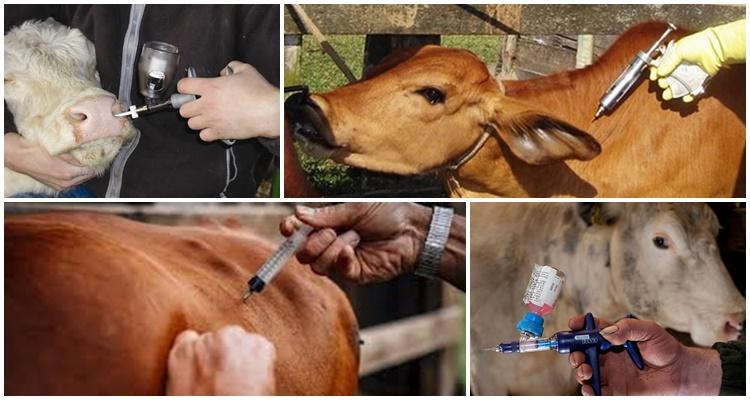
Rules for the use of vaccine for cattle
Before vaccinating an animal against anthrax in cattle, it is important to know the rules for using the drug. Instructions for use will help to correctly use the vaccine. The animals should be vaccinated clean, in full compliance with sanitary standards. The area where the injection will be made must be treated with 70 percent alcohol.
Contraindications and side effects
The vaccine against infection has several contraindications that must be considered before vaccination. These include:
- it is forbidden to vaccinate an animal if it is sick or has recently been ill;
- you cannot be vaccinated if the animal is being treated and medications are already being administered to it;
- it is forbidden to vaccinate young animals up to 3 months;
- after vaccination, livestock cannot be treated with anti-inflammatory or antiseptic agents;
- it is not recommended to vaccinate livestock at very high or low temperatures outside, in rainy weather;
- vaccination is prohibited if the animal has undergone surgery;
- the vaccine is not administered to animals in late pregnancy, as well as within two weeks after birth.
In these situations, the immune system of animals is weakened, so the procedure can cause significant harm rather than benefit.After vaccination, it is necessary to examine the animal in order to prevent serious unpleasant consequences. If a slight swelling has formed at the injection site, then this should not be a cause for concern - it disappears within a few days.
But action should be taken if the temperature rises, muscle tremors, anxiety, swelling, involuntary salivation, weakness, frequent shortness of breath appear. Then an individual with post-vaccination complications should be isolated from the herd and seek help from a veterinarian.
